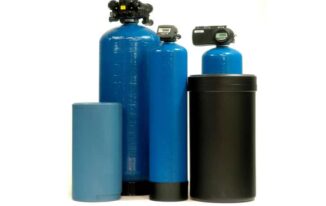There are many benefits attached to using soft water in your home. Some of these benefits include; extending the lifespan of appliances, reducing energy usage, improving the texture of the skin, and protecting plumbing fixtures. To ensure that the water used in your home is a soft one, there is a need to install a water softener.

A water softener works through an ion exchange process. This process removes the magnesium and calcium present in hard water.
Unfortunately, just like any man-made device, with time, water softeners can begin to reduce in quality and become unable to perform their functions effectively. So, if you are not sure whether your water softener is still effective, or you want to find out how long do water softeners last, this article is for you.
Here are certain signs that your water softener is due for a change:
Change In Water Taste
If there’s a noticeable change in the taste of the water coming out from your kitchen’s faucet recently, it could be a sign that your water softener is no longer working effectively. The way hard water tastes is very different from soft water so there’s no way you can substitute one for another. If you’re already used to the smooth taste of soft water and you start to notice a change in this taste, then it is probably time to replace the device.
Washing Machine Issues
As mentioned below, one of the advantages of using soft water is that they prevent appliances from getting spoilt easily, and one of such appliances is the washing machine.
Using your washing machine with hard water will surely lead to it getting damaged. This damaging process will start gradually. Signs like stiffness at the rotation points, changing of color, etc should be looked out for.
In addition to this, washing clothes with hard water can make them stiff and itchy. Although fabric softener can counter stiffness in cloth to some extent, making sure your water is soft enough is still the best way to go about it.
Insufficient Lather
Another major sign indicating that your water softener needs replacement is when your bathing soap or shampoo refuses to lather. Once you notice that it takes longer than usual for your soap to lather, you should call a plumber to examine your water softener. If it turns out it’s the one causing the issue, you should ask for it to be replaced. If the problem is not with your water softener, you should consider changing the brand of the soaps and shampoos you use.
Build-ups Around Pipes Or Faucets
When you see crusty build-ups around the pipes and faucets in your home, it can also be a sign that soft water no longer runs in there. Hard water is characterized by minerals that are capable of causing build-ups around pipes or faucets. To tackle these, when you see them, you need first clean the build-up. Thereafter, you can make plans towards getting another water softener.
Hard Water Spots
Once you start noticing new spots on your shower door or glassware, it can also be a sign that your water softener is broken and your water is no longer soft. The only way you can stop these spots from spreading is by getting a new water softener or having the damaged one repaired if possible. Else, it will only lead to the buildup of more spots that can spoil the appearance of your shower door or sliding window as well.
Change In Water Pressure
If you start to notice a reduction in your water pressure, that can also be a sign that your water softener isn’t as effective as it used to. The build-up of calcium and other minerals along your pipes will surely reduce the level of water pressure. To rectify this, you might need to change the entire pipeline, after making sure the water softener is working effectively.
Having read the signs mentioned, you should now be able to detect if the water softener in your home is still as effective as before or needs a change. Once you notice any of these signs, phone the plumber nearest to you immediately. They will help you check for damages and advise you on steps to take.



